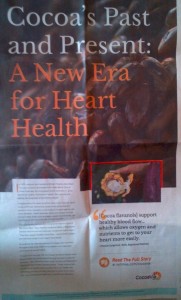The bizarre saga of the 2015 Dietary Guidelines: Continued
Two events yesterday:
#1. USDA and HHS announce that sustainability will not be part of the Dietary Guidelines.
This year, we will release the 2015 edition, and though the guidelines have yet to be finalized, we know they will be similar in many key respects to those of past years. Fruits and vegetables, low-fat dairy, whole grains and lean meats and other proteins, and limited amounts of saturated fats, added sugars and sodium remain the building blocks of a healthy lifestyle.
…In terms of the 2015 Dietary Guidelines for Americans (DGAs), we will remain within the scope of our mandate in the 1990 National Nutrition Monitoring and Related Research Act (NNMRRA), which is to provide “nutritional and dietary information and guidelines”… “based on the preponderance of the scientific and medical knowledge.” The final 2015 Guidelines are still being drafted, but because this is a matter of scope, we do not believe that the 2015 DGAs are the appropriate vehicle for this important policy conversation about sustainability.
OK, but see Michele Simon’s analysis of the legal issues related to sustainability in the guidelines, and My Plate My Planet’s analysis of the comments filed on the sustainability question.
As my analysis shows, the USDA and HHS would be well within its legal authority to include sustainability. In summary:
- A plain reading of the statute does not preclude sustainability;
- The Congressional intent was to further a broad agenda on health;
- Previous DGA versions included issues beyond “nutrition and diet”.
And also see Kathleen Merrigan et al’s argument in favor of sustainable dietary guidelines in Science Magazine.
So this is about politics, not science.
#2. A coalition of critics of the Dietary Guidelines is attempting to block their release.
Yesterday’s Hagstrom Report and, later, Politico (both behind paywalls) reported that this group is calling on USDA and HHS to turn over the guidelines to a committee of the National Academy of Sciences Food and Nutrition Board for reexamination before releasing them to the public.
The issues? The meat and beverage recommendations.
The group is funded by philanthropists Laura and John D. Arnold, who fund Nina Teicholz’s work.
Teicholz is on the board of the group as is Cheryl Achterberg, dean of the Ohio State University College of Education, and John Billings, who directs the Wagner School’s Health Policy and Management Program at NYU (why they agreed to do this is beyond me).
Hagstrom notes that coordinating support is coming from Beth Johnson, a former undersecretary for food safety at USDA who has her own consulting firm with clients apparently including the National Restaurant Association and the National Cattlemen’s Beef Association.
Other members of the advisory board include several scientists who do research funded by food companies.
The Coalition’s website is here.
This morning’s Politico Pro Agriculture has a long piece on the funding behind the coalition.
In the lead up to congressional hearings on the proposed 2015 dietary guidelines, the Arnolds are spending an initial $200,000 to communicate that critique and to advocate for changes that they say would improve the process. They have funded the new political action group, called The Nutrition Coalition, whose well-placed lobbyists have helped Teicholz score face-to-face meetings with top officials in Congress and the White House to push for an independent review of the guideline process. The team helped persuade lawmakers to insert language in the fiscal 2016 House agriculture spending bill to direct the National Academy of Medicine to conduct such a review.
Really? Eating fruits and vegetables and not overeating calories requires this level of lobbying?
This too is about politics.
The mind boggles.
Addition
The Hagstrom Report is keeping track of the testimony at today’s congressional hearing on the guidelines.





